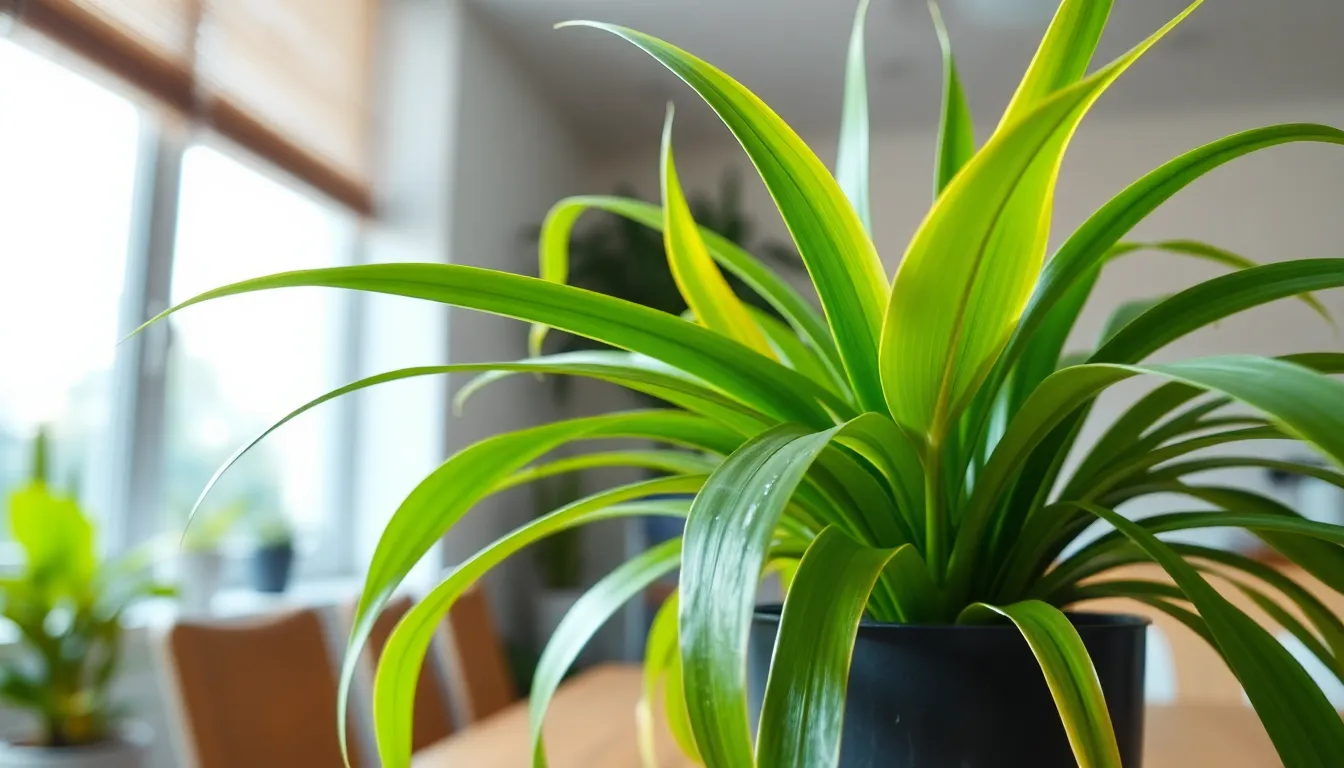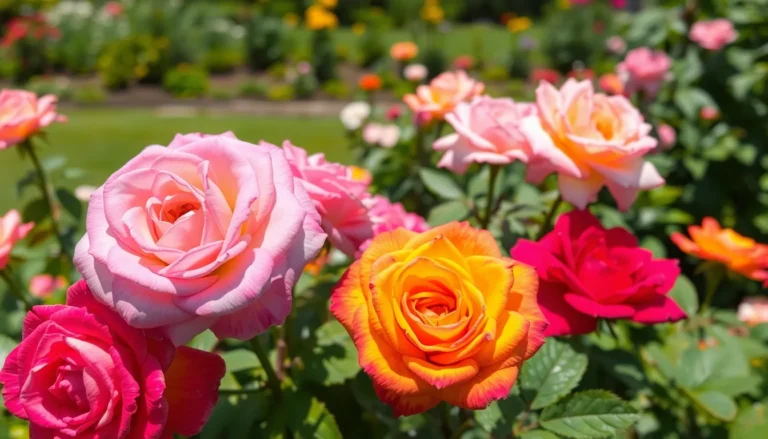
Spider Plant Diseases: Identify, Prevent, and Treat Common Issues for Healthy Growth
Spider plants are the beloved green companions in many homes, known for their air-purifying abilities and easy-going nature. However, even these resilient houseplants can fall victim to pesky diseases that threaten their health and charm. Imagine your spider plant looking less like a vibrant green beauty and more like a sad, wilted noodle. Not quite the aesthetic you had in mind, right?
Spider Plant Diseases
Spider plants can experience various diseases that affect their growth and appearance. Identifying these diseases promptly ensures better care and ultimately healthier plants.
Fungal Infections
Fungal infections pose significant threats to spider plants. Root rot occurs when soil remains excessively wet, leading to decaying roots and drooping leaves. Leaf spot, another common issue, features dark spots on leaves, resulting from high humidity and poor air circulation. To combat fungal diseases, practitioners should reduce moisture levels, improve airflow around the plant, and apply fungicides when necessary.
Bacterial Infections
Bacterial infections cause unique problems for spider plants. One prevalent bacterial disease, soft rot, manifests as mushy foliage and stems, typically arising from overwatering and poor drainage. Another issue, bacterial blight, appears as yellowing and wilting leaves. Maintaining a clean growing environment and ensuring proper watering techniques can help avoid these infections. Infected plants should receive immediate attention to prevent spreading.
Viral Infections
Viral infections can severely impact spider plants. Mosaic virus leads to mottled leaves, stunted growth, and diminished vitality. Furthermore, leaf curling often indicates viral problems. Unlike fungal and bacterial infections, there’s no cure for viral diseases. Removal and disposal of infected plants becomes essential to protect healthy ones. Regular monitoring for early signs provides the best chance for maintaining spider plant health.
Symptoms of Spider Plant Diseases

Identifying the symptoms of spider plant diseases is crucial for effective management. Early detection helps maintain the plant’s health and appearance.
Leaf Discoloration
Leaf discoloration manifests as yellowing or browning of the foliage. Yellow leaves often indicate overwatering or nutrient deficiency, whereas brown leaf tips suggest underwatering or low humidity. Inspecting the plant regularly enables early identification of these symptoms. Correcting watering practices and ensuring a balanced fertilizer can restore the vibrant color of the leaves. Monitoring humidity levels improves overall vitality. Adjustments to the environment can prevent further damage.
Wilting and Drooping
Wilting and drooping are signs of distress in spider plants. Lack of water, root rot, or pest infestations lead to these symptoms. Checking soil moisture helps determine watering needs. If the soil feels soggy, root rot might be present, necessitating immediate action. Pruning affected roots promotes recovery. On the other hand, if the soil appears dry, a deep watering restores hydration. Regular inspections encourage early intervention, maintaining the plant’s vigor.
Stunted Growth
Stunted growth indicates underlying health issues affecting spider plants. Nutrient deficiencies, root problems, or inadequate light contribute to this condition. Testing the soil for nutrient levels reveals if fertilization is necessary. Placing the plant in a brighter location supports healthy growth. Additionally, inspecting the root system helps identify any rot or overcrowding. Repotting into fresh soil encourages better development. Addressing these factors promptly allows for successful recovery and flourishing growth in spider plants.
Prevention and Treatment
Effective prevention and treatment of spider plant diseases enhance their resilience and longevity. Employing cultural practices, chemical treatments, and organic solutions establishes a robust approach to maintaining healthy plants.
Cultural Practices
Cultural practices significantly reduce the risk of spider plant diseases. Maintaining proper watering schedules ensures soil stays moist without becoming oversaturated. Enhancing air circulation through spacing prevents fungal infections. Providing adequate light conditions promotes overall plant strength, while regular fertilization balances nutrient levels. Inspecting plants frequently allows for early detection of any health issues. Adjusting humidity levels can also help mitigate stress and prevent disease spread.
Chemical Treatments
Chemical treatments offer a straightforward approach when pests or diseases persist. Fungicides specifically target fungal infections like leaf spot and root rot. Use of bactericides can combat bacterial blight and soft rot effectively. Following instructions closely on dosage and application frequency maximizes efficacy. It’s essential to apply treatments during dry conditions to enhance absorption. Ensure treatments are suitable for indoor plants to prevent harm to surrounding environment.
Organic Solutions
Organic solutions provide eco-friendly alternatives for managing spider plant health. Neem oil works as a natural pesticide against both insects and fungal diseases. Diluting soap solutions creates an effective way to eliminate pests while being gentle on the plants. Regular use of compost enhances soil health, fostering strong, disease-resistant plants. Using companion planting techniques can naturally deter pests, promoting healthier growth. Implementing crop rotation practices helps in breaking disease cycles, improving plant vitality.
Impact of Diseases on Spider Plant Health
Diseases significantly compromise spider plant health, leading to visible damage and declining vitality. Fungal infections such as root rot occur when excess moisture and poor air circulation coexist. Root rot manifests through yellowing leaves and a mushy root system, resulting in severe growth impairment. Inadequate drainage exacerbates the problem, stressing the need for proper potting methods.
Bacterial infections like soft rot can devastate spider plants as well. Symptoms include wilting, browning leaf margins, and a foul odor from the affected areas. Overwatering contributes to this condition, making proper watering techniques critical for prevention. Bacterial blight, characterized by dark spots on leaves, compromises overall plant aesthetics and health.
Viral infections represent another challenge for spider plants, with the mosaic virus being particularly damaging. This virus leads to mottled leaves and stunted growth, creating long-term health issues for the plant. No cures exist for viral infections, making early detection and management vital for sustaining spider plant health.
Regular inspections reveal early signs of distress, facilitating timely interventions. Observing for specific symptoms such as leaf discoloration can indicate underlying issues. Conversely, wilting and drooping often signal critical water needs or potential root concerns. Other factors like inadequate light and nutrient deficiencies also warrant attention when assessing plant health.
Preventive measures play a key role in maintaining spider plant vitality. Adhering to consistent watering schedules ensures that plants receive adequate moisture without excess. Enhancing air circulation around plants and providing optimal lighting conditions can further diminish disease risks. By implementing these practices, gardeners can significantly improve the resilience of their spider plants against diseases.
Conclusion
Maintaining the health of spider plants requires vigilance and proactive care. Understanding the symptoms of common diseases allows for quick identification and intervention. By implementing effective prevention strategies like proper watering and ensuring good air circulation, plant owners can significantly reduce disease risks.
Utilizing both chemical treatments and organic solutions can help manage persistent issues while promoting a thriving environment. The resilience of spider plants is achievable with consistent attention and care. Ultimately, a healthy spider plant not only enhances indoor spaces but also contributes to improved air quality.



